Unlike American light tanks, which towards the war reached perfection in their class, light SPGs did not work out. The first successful design, the HMC M8, appeared towards the middle of the war. It did not satisfy the military and work on light SPGs continued. The result of this work was the HMC M37, a good design that appeared far too late. The production run was limited and it only saw battle after the end of WW2.
In search of a chassis
The Americans had several reasons why attempts to build a light SPG failed. The requirements for this class of vehicle not only changed constantly, but were very precise. For instance, the HMC T3 and T18 were tasked with close support of tank units. The attempt to create an SPG that engaged targets with direct fire failed. The HMC M8 that appeared later was successful, but it did not follow the formula for an SPG. While most vehicles of this class had immobile casemates, the M8 received an open to turret. This increased the mobility of fire, but made the job of the crew harder and reduced the ammunition capacity. The M8 also had to fire indirectly quite often. In this case there was no need for a turret, but a more powerful round would have come in handy.
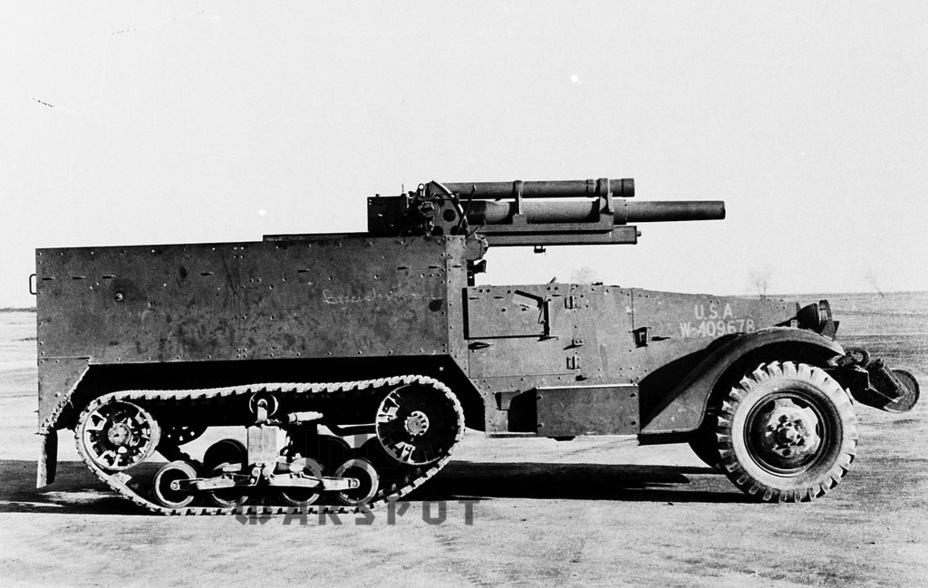
The second issue was the chassis. A light tank chassis did not provide for a sufficiently large fighting compartment. It's hard to imagine a high caliber gun in a 4.5 meter chassis, a good chunk of which is being taken up by the engine compartment or the transmission. There was a strong desire to unify tanks and SPGs, which left little space for the crew or ammunition. The HMC M8 was the only successful example of this doctrine, and it was closer to a tank in design. There was also the GMC M18 tank destroyer, but it was also very tank-like. An attempt was made to use it as a chassis for an SPG. On June 30th. 1944, the HMC T88 program was launched. This was an HMC M8 on steroids. The 76 mm gun was replaced with a 105 mm M4 howitzer used on Sherman tanks.
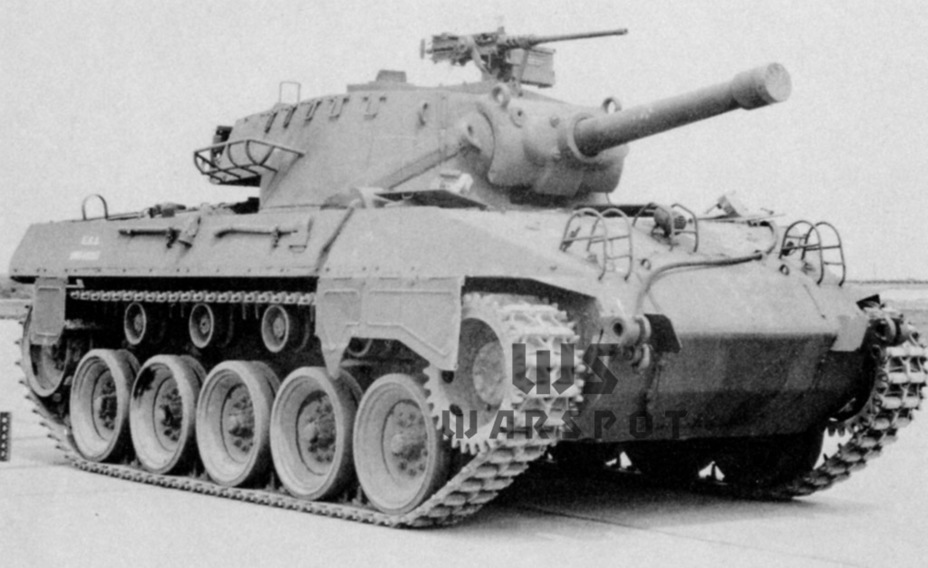
The result was a rather good design, but with the same problems that plagued the M8. The ammunition capacity was 40 rounds, more than 1.5 times less than carried by the Medium Tank M4(105). The maximum elevation was the same: 35 degrees. The T88 had two advantages: smaller size and better mobility. However, the artillerymen needed to take as many shells as possible and launch them in a trajectory that was as steep as possible. The T88 was closer to a howitzer tank than an SPG. The role that the T88 would play was unclear, which was one of the reasons why the project remained an experiment.
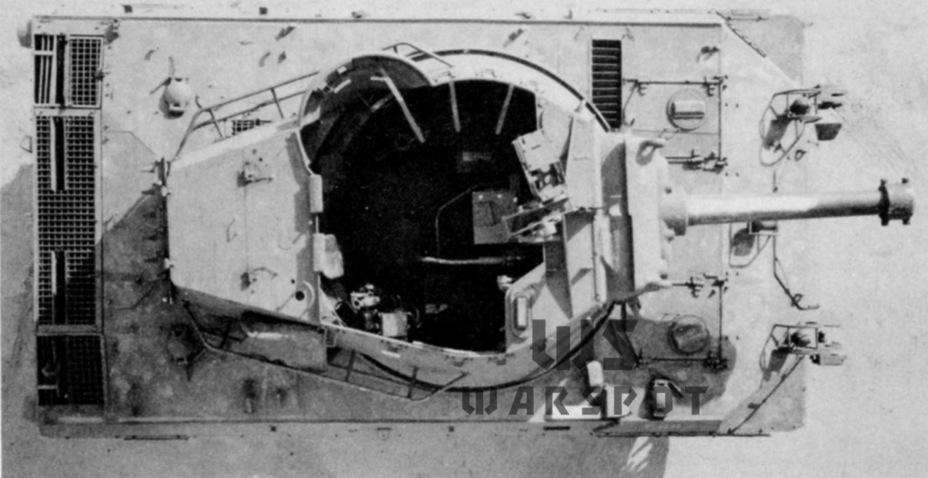
Failures in creating a light SPG on a tank chassis did not mean that American industry would sit idle. 324 HMC T19s were build from January to March 1942. This vehicle was based on the M3 halftrack chassis. It was very tall and could only carry 8 rounds of ammunition, but it had high mobility. In April of 1942 it was replaced by the most famous American self propelled howitzer: the HMC M7. The chassis of the Medium Tank M3 was well suited for the job. The resulting vehicle was very good, and the M7 remained in service for 20 years.
However, experience in North Africa showed that the M7 had its drawbacks. Such a large chassis could be used for something bigger than a 105 mm gun. Using an unmodified M2A1 105 mm howitzer also led to issues. Two crewmen had to aim it (there were also two sights), it took up a lot of space, and firing directly was difficult. The HMC M7 also lacked mobility. It's hard to call it slow, but it was not fast enough. The search for a light chassis for a 105 mm howitzer continued.
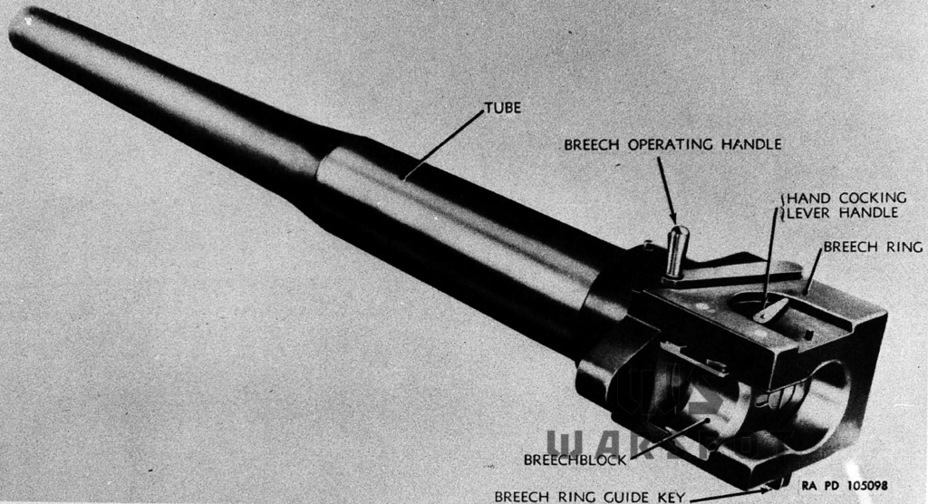
A ray of hope was found in the spring of 1943. The Ordnance Committee approved the development of a new tank, the Light Tank T24. This tank was much more promising than its predecessors. The Light Tank T24 chassis was longer and lower. The mass of the T24 was higher, but only due to the parts that would have to be removed for an SPG (the turret and armament). The Light Tank T24 was interesting for this role even before it was built. The Ordnance Committee gave the order to develop the Howitzer Motor Carriage T76 on May 6th, 1942, before the Light Tank T24 existed in metal. On July 2nd work on the T76 received final approval. The requirements were as follows: the mass was limited to 20 tons, the protection had to be higher than that of the M7, and the top speed had to be 56 kph. The developer of this vehicle was Cadillac, as it also developed the Light Tank T24.
Efficient use of space
The USSR and Germany independently reached the same conclusions when it came to light SPG design. The engine and transmission of a light tank were moved to either the front or the middle, which freed up the rear of the vehicle. That part housed the crew, weapons, and ammunition. The SU-76, Wespe, Marder III and Grille were built in this way. The Americans, however, went their own way. The typical American SPG used the basic chassis without any change to the layout.
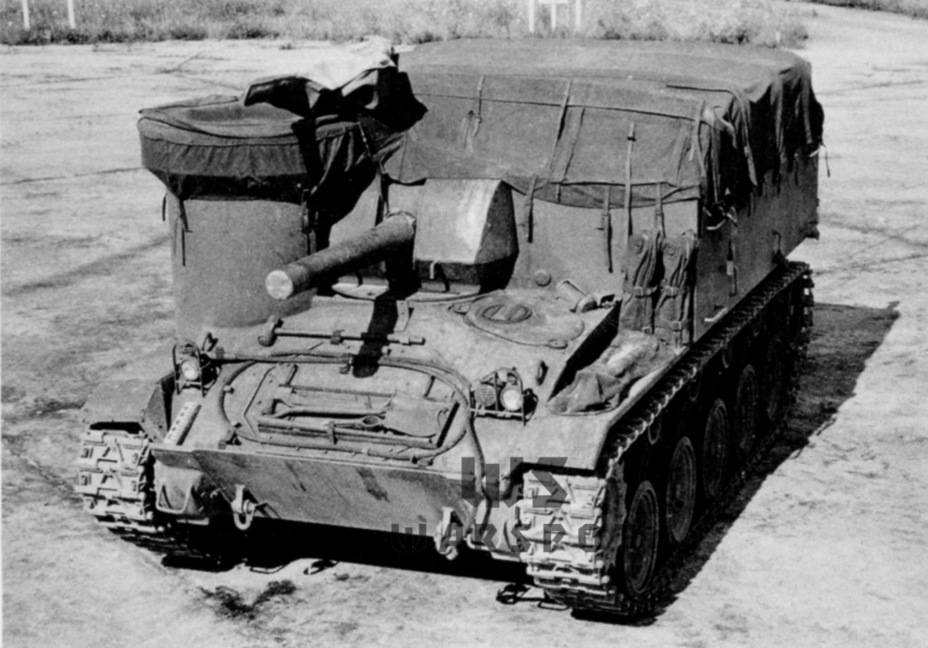
Initially the T76 did not deviate from this method. Unfortunately no illustrations of the initial layout remain, but it's not hard to reverse engineer it. The model presented in August of 1943 would have been similar to the HMC T82, a light SPG on the Light Tank M5 chassis that was designed starting in November of 1943. The front of the vehicle changed little and the seats of the driver and his assistant were preserved. The fighting compartment was similar to what was eventually used on the T82. It held the 105 mm howitzer, a crew of 4, and ammunition.
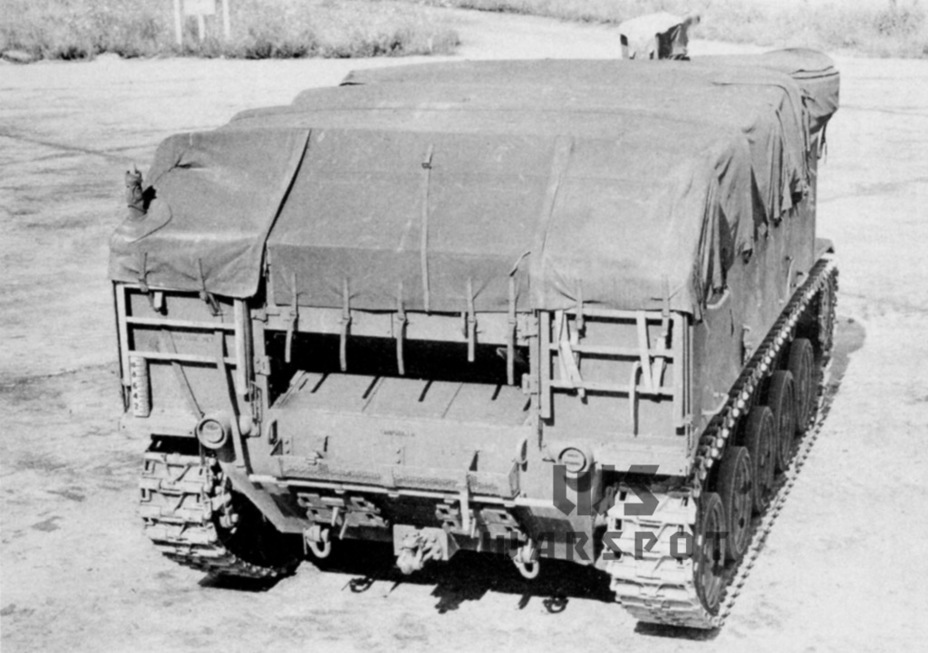
The project changed significantly after it was reviewed. The assistant driver was removed, which won some space. The fighting compartment extended above the engine deck, repeating the solution used by the Germans on the Grille. This made servicing the vehicle harder, but allowed it to carry much more ammunition. The front right corner had a similar mount for the Browning .50 cal M2HB as the M7. The gun mount was moved to the right, which also resulted in some free space. Finally, the weapon itself was replaced with the tank variant of the howitzer, which was being developed in the summer of 1943. This resulted in even more free space.
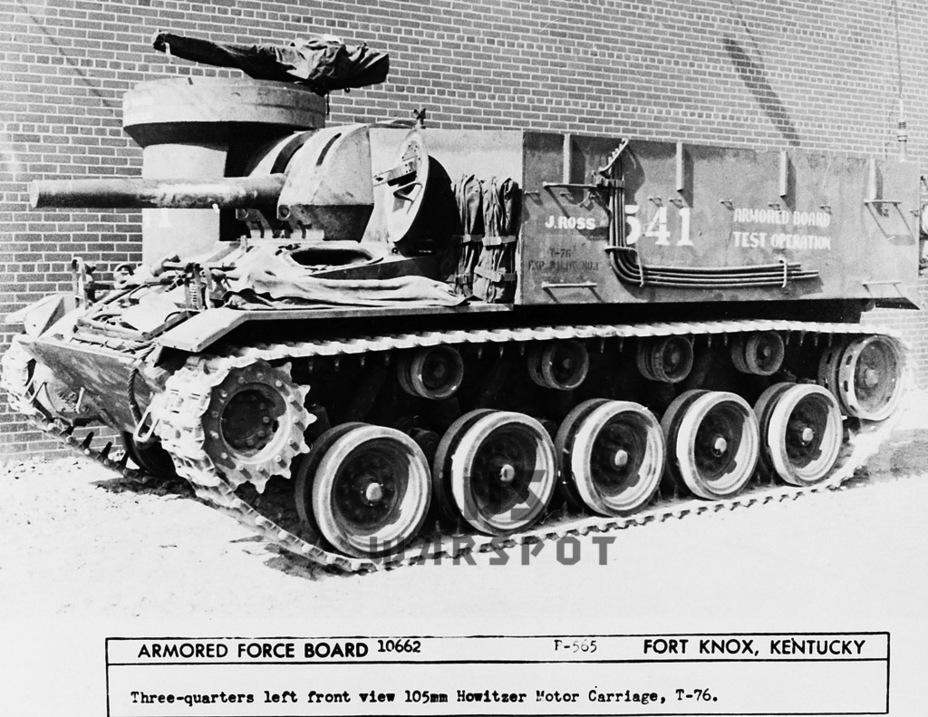
The second iteration of the model was presented in September of 1943. This was not its last form. The Tank-Automotive Center and other military organizations introduced various changes and refined the requirements. The new requirements were presented on November 13th and approved on December 21st. According to the new requirements, the vehicle had to weigh no more than 17,690 kg. The speed remained at 56 kph. The ammunition capacity would be 66 rounds, 3 fewer than the M7 had. The 105 mm M4 howitzer was installed in the new T14 mount. Unlike the tank howitzer, the gun was installed on a pedestal mount, and there were two gunners. The T92 periscopic sight made direct fire easier. The T14 gun mount would have allowed the gun to elevate to 45 degrees. The requirement to improve protection was forgotten, especially when the T76 had to be made lighter. The armour was 12.7 mm all-round, protecting from rifle caliber bullets only.
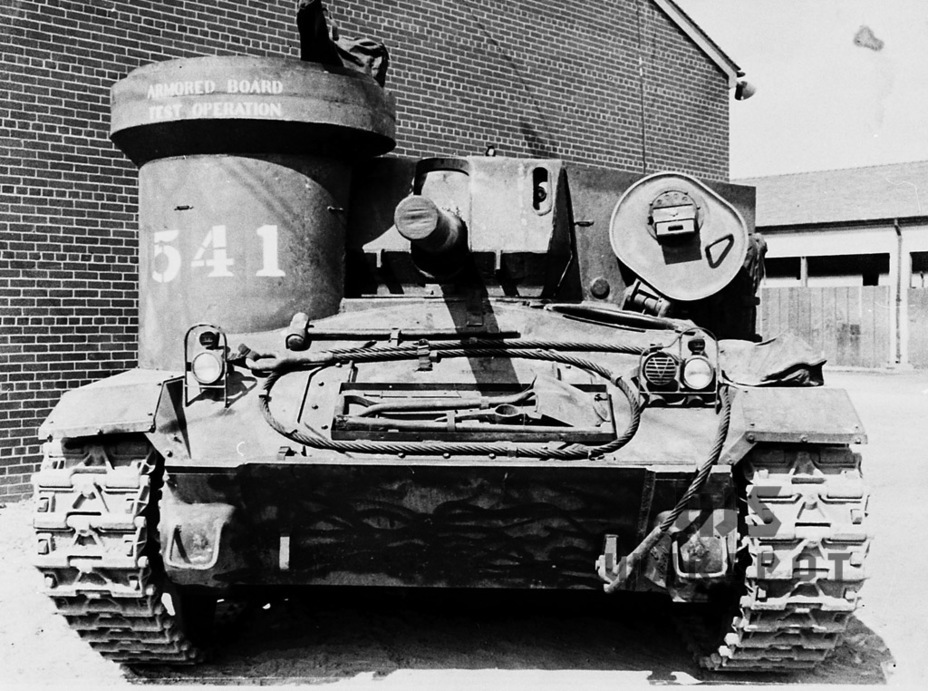
The final requirements were approved on March 6th, 1944, but production of the vehicle had to wait. The T14 mount needed additional changes. Trials finished only in June of 1944. Soon after the experimental HMC T76 was sent to the Aberdeen Proving Grounds. Later the vehicle was sent to Fort Knox for army trials.
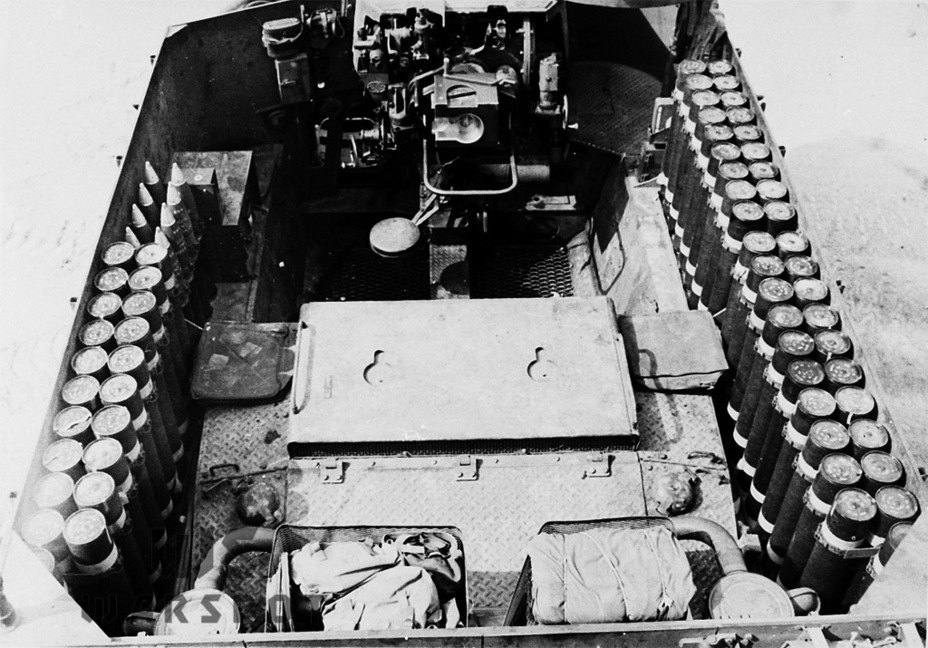
The trials were successful. The vehicle was more mobile than the HMC M7, and its development made the HMC T82 redundant, as it had a more powerful gun and carried more ammunition. On the other hand, trials at Fort Knox showed that the design needs more work. For instance, the machine gunner's station was too large, which cramped the loader's workspace. The M49C AA gun turret was replaced with the T107, which was smaller in diameter (914 mm vs 1067 mm). 66 rounds of ammunition also seemed too low. The capacity was increased by rearranging the ammunition. The HMC T76 had the slots of its ammunition racks moved from vertical to horizontal. The SCR 510 radio was also removed for the sake of increasing ammunition capacity. The rear hatch was also altered. Instead of two doors that opened sideways there was now one door that opened downwards, forming a ramp that helped load ammunition.
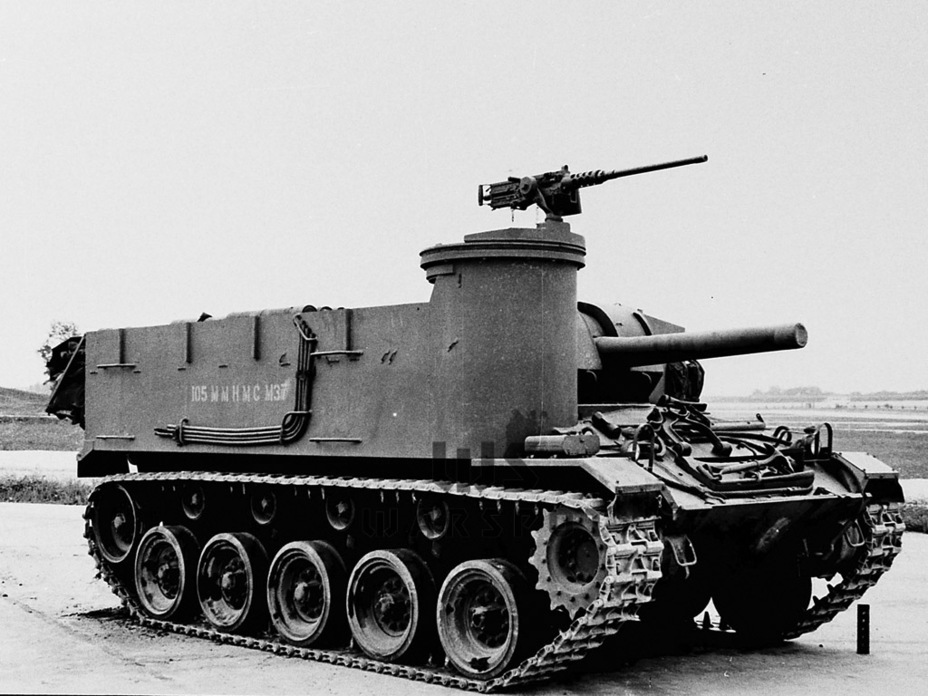
The second prototype with all the desired changes was ready in the fall of 1944. Work was performed in tight cooperation with American Car & Foundry Co. As a result of the trials, the SPG was standardized as the HMC M37 in January of 1945. Compared to the earlier prototype, the mass increased to 18,144 kg, but this was not the end. Looks like the weight calculations were performed incorrectly, since the user manual has a higher number: 20,865 kg. Considering the changes, this was more realistic. The ammunition capacity increased from 66 to 126 rounds, which was more than a ton on its own. The amount of ammunition stored onboard for small arms also increased.
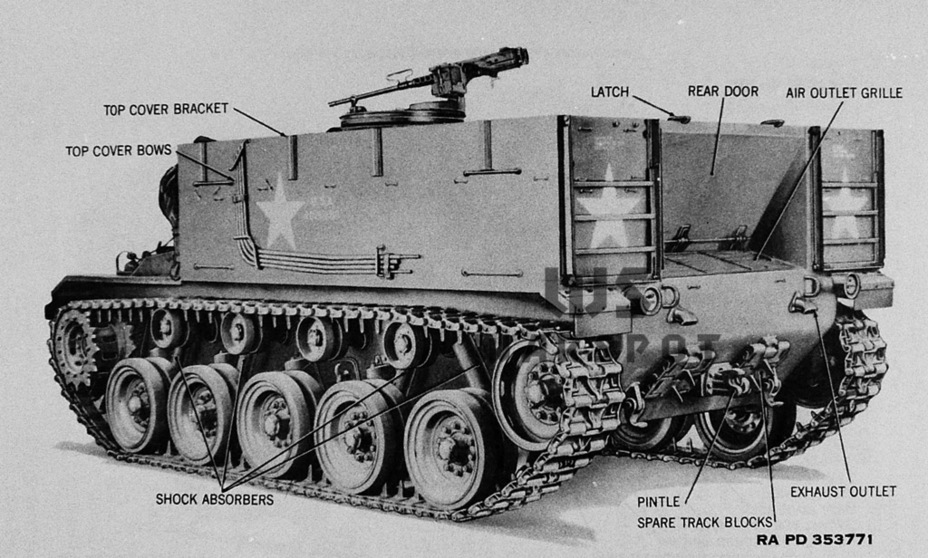
After the HMC M37 was standardized the improved gun mount was given the index M5. The final gun elevation was only 43 degrees, but the gun could aim 25.4 degrees to the left and 26.3 degrees to the right. The telescopic M76G and periscopic M12 sights were used. Since the M5 gun mount was much more compact than the default M2A1 mount, it was much more convenient to work with. The crew did not have to trip over the trails that were preserved in the SPG variant of the gun. The work of the crew was also more comfortable. While the M7's crew stuck out from the side armour and could be hit by the enemy, this problem was not anywhere as severe on the M37. Of course, the loader had to reach for the higher ammunition racks once the lower ones have been expended, but the working conditions were still better than on the HMC M7.
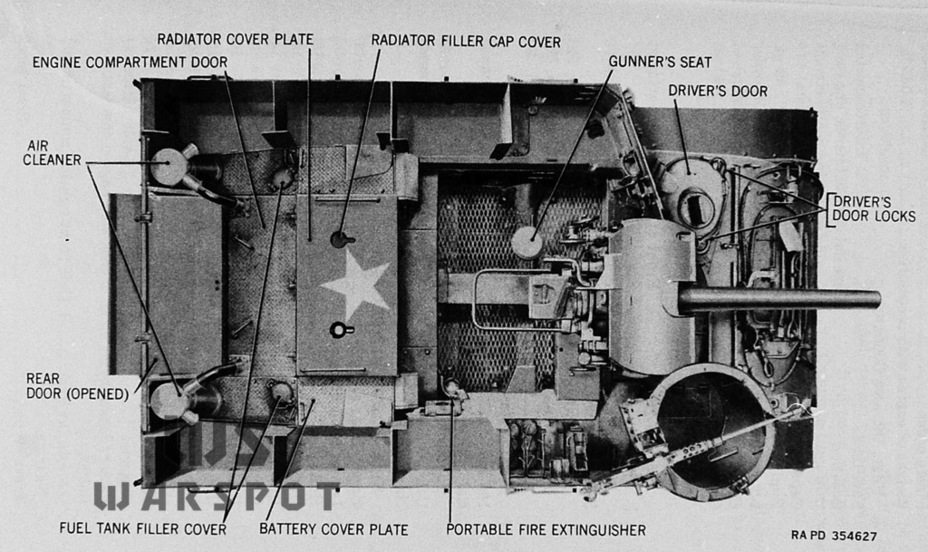
Four years of work gave the Americans a good contender for the title of best light SPG. It was the most mobile vehicle of its kind. Compared to the Wespe, its closest equivalent, the M37 had four times as much ammunition. The German vehicle was also slower and had a smaller crew. The M37 was a top notch SPG with only one drawback. As mentioned above, it was standardized in January of 1945, when the war was already coming to an end.
Victim of peace
Various additional trials and bureaucratic delays led to production being delayed until May 31st, 1945. By that point the war in Europe had ended and victory over Japan was only a matter of time. Nevertheless, the order volume was impressive. The first 50 SPGs were expected in August 1945, 100 in September, and 135 monthly from October to December. 270 were expected in the first quarter of 1946, 270 more in the second, and 215 in the third. Production of 555 M37s was planned in 1945 and 755 in 1946. The biggest producer was American Car and Foundry Co. Cadillac Motor Car Division and Massey-Harris Co., the main producers of the Light Tank M24, also joined in.
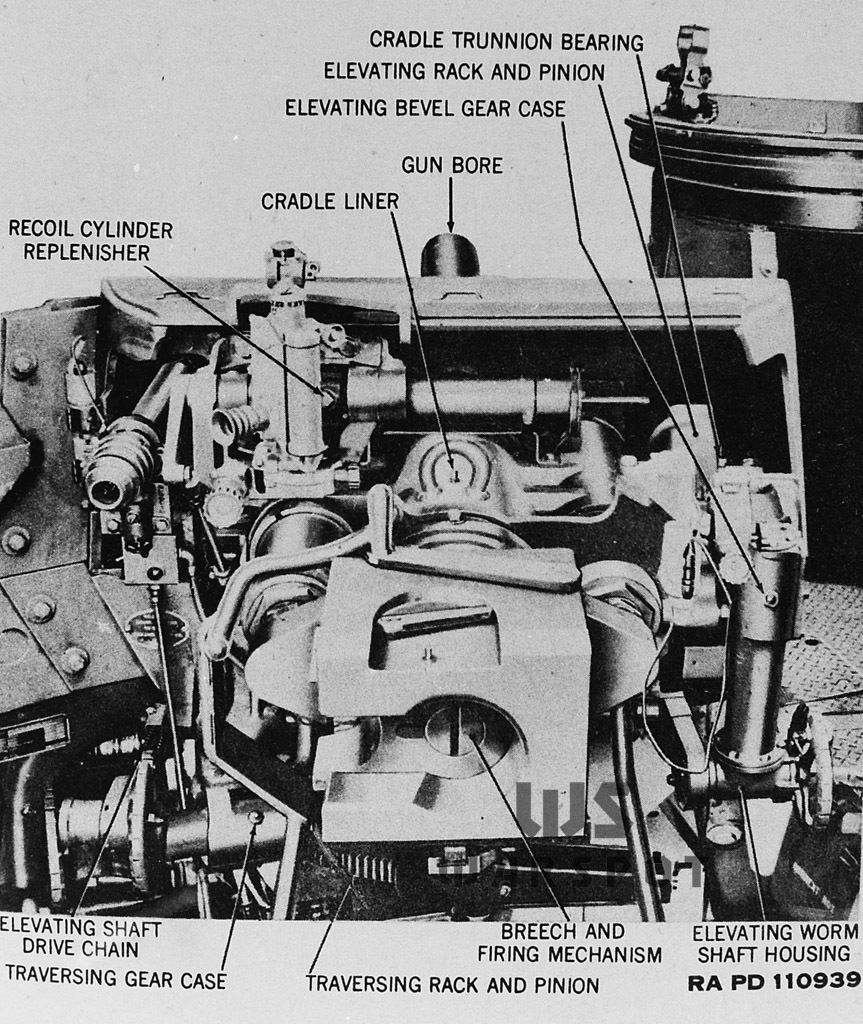
The contract was later reduced to 448 vehicles. This was just the beginning. The end of WW2 triggered a global reduction in production. Warehouses were full of existing vehicles and no replacement was urgently needed. This had a direct effect on the fate of the HMC M37. The first SPGs were delivered in September of 1945, and production ended in October. Only 150 were built, all by American Car & Foundry Co. Sometimes the number 316 is presented, but that is doubtful. Even American industry could not produce so many in the first two months of production.
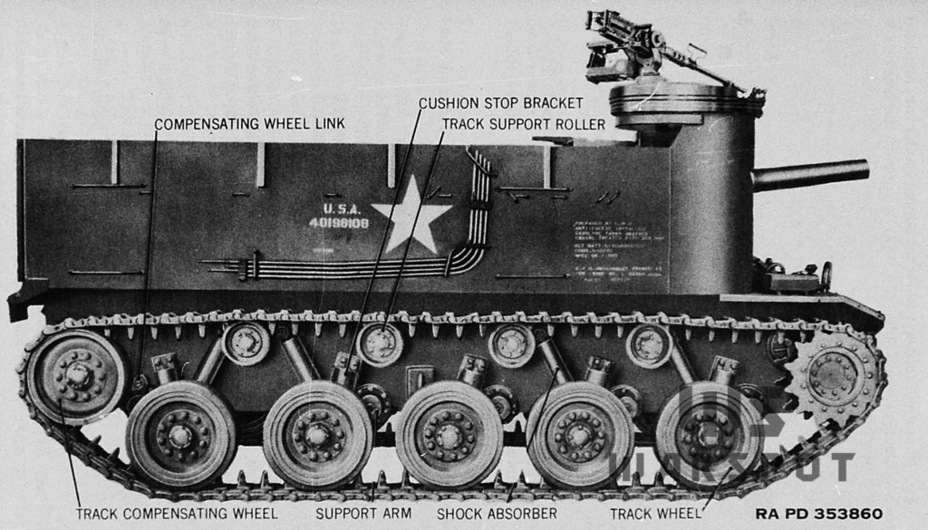
Completion of production did not stop experiments on the HMC M37 chassis. One of the developments was the installation of additional armament. Good experience with recoilless weapons resulted in experiments in mounting them onto vehicles. The 75 mm T21 recoilless rifle, later standardized as M20, was installed. The second test was with the 107 mm (4.2 inch) recoilless mortar. These guns were attached to the AA gun turret instead of the .50 cal. Trials of two vehicles armed with recoilless weapons continued until 1947. These trials were not blessed with success. Recoilless weapons have a specific drawback: firing results in a stream of gases escaping from the rear. At certain angles this could result in injury or death to the crew in the fighting compartment. An order was given on October 2nd 1947 to stop the trials.
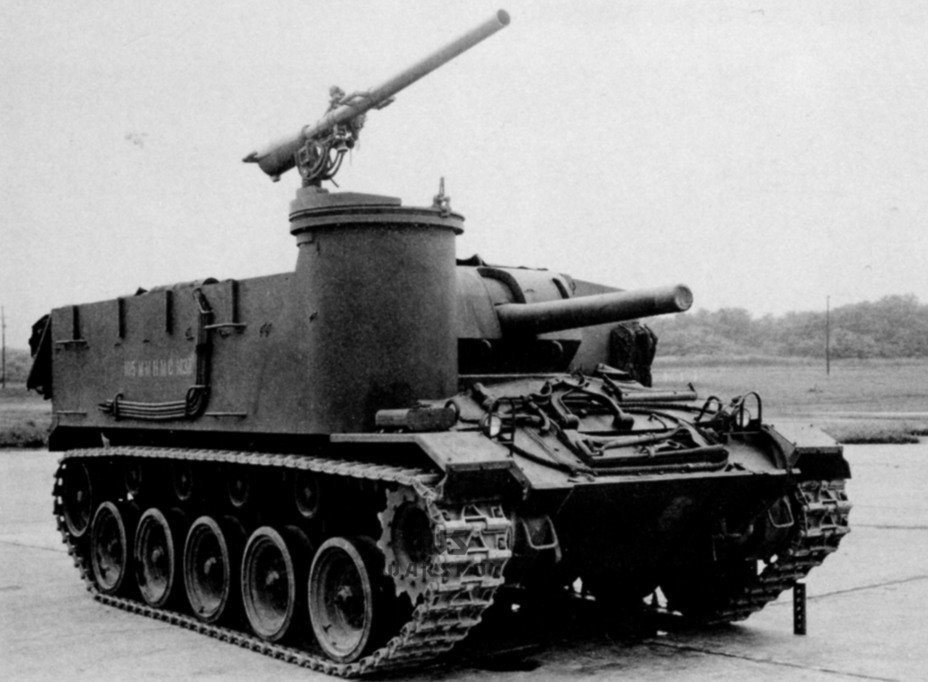
A more significant rework was being undertaken by the Detroit Arsenal. Work on the vehicle named 4.2 Inch Mortar Carrier T38 began in September of 1945. The howitzer was removed and replaced with an M2 107 mm chemical mortar. The combat mass was reduced to 17,463 kg. The crew consisted of 6 men. The mortar was installed in the fighting compartment and did not need an opening to fire through, so the gun port was sealed. The vehicle carried 140 rounds of ammunition. Unlike the recoilless rifle mounts, trials went on for some time. On one hand, the vehicle was rather good. On the other hand, by the time trials completed in 1950 the idea of a self propelled mortar was no longer prioritized. As it often happens, the Americans later had to design another mortar carrier on a different chassis.
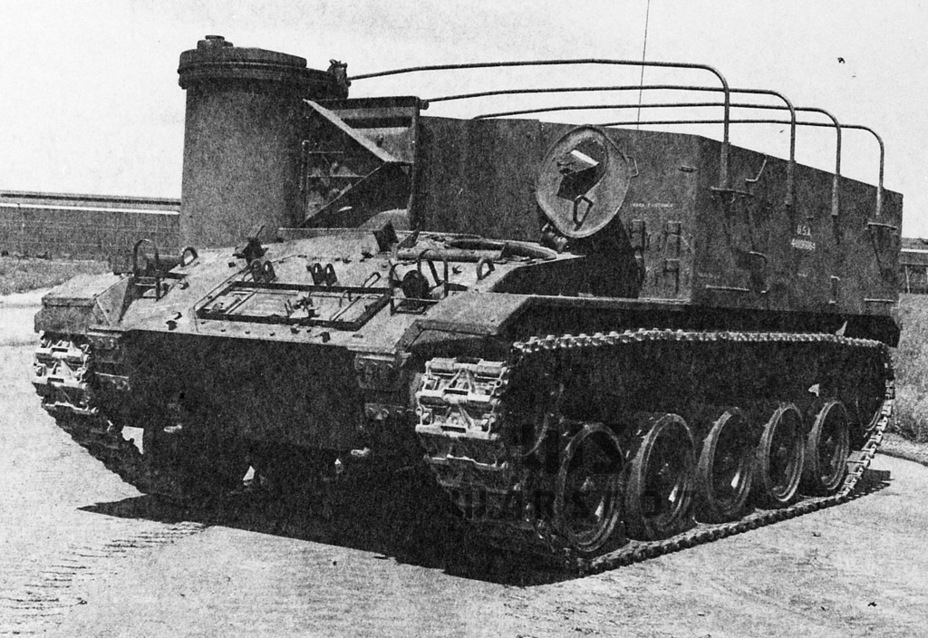
The small production run meant that the M37 was used very little. It was successfully employed alongside the HMC M7, which it was supposed to replace. By 1950 the M37s went through a small modernization. That year also marked its trial by fire. These vehicles were actively used in Korea. The high elevation angles afforded by the M5 mount came in handy. However, experience in Korea showed that a gun crew of 8 was needed.
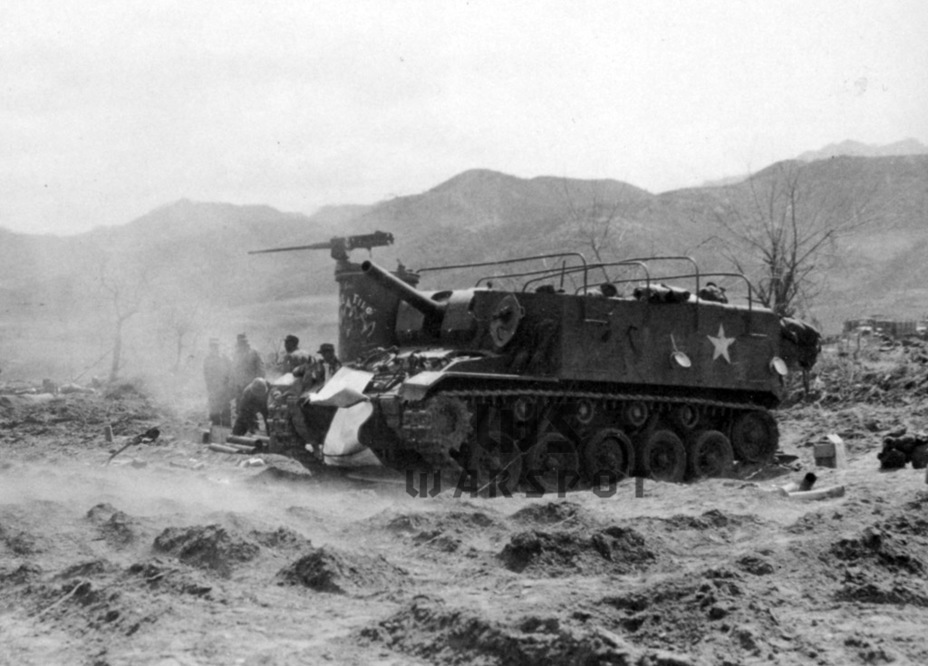
The career of the M37 began to come to an end in the late 1950s. Its replacement, the M52, was already finished. This vehicle was built on a different chassis and with a different doctrine. The HMC M37 was removed from service in the US Army by the end of the 1950s. 36 of them were sold to Spain, of those at least 4 survive to this day. Despite its complex fate, the M37 was not a bad vehicle. The Americans managed to create a worthwhile light SPG with high mobility and a large ammunition capacity. The problem was that it took them too much time.
Translated by Peter Samsonov. Read more interesting tank articles on his blog Tank Archives.
Sources:
- NARA;
- Stuart History of the American Light Tank, Vol. 1, R.P. Hunnicutt, Presidio Press, 1992.






